Lois Farfel Stark's Blog: Lois' Lens, page 2
April 3, 2019
Space Exploration or Space Race?

The air belongs to everyone; the best things in life are free.
Maybe not. Air space, air quality, and aerial views are subject to ownership, pollution, and obstruction today.
When space exploration began, we felt a thrill seeing Earth as a whole sphere. Consciously and unconsciously, this created the sense that humans are bound together on this planet in common consequences. But our own human nature doesn’t fully understand our interconnectedness. Space exploration became the space race.
When the first satellites went up, bringing us images of weather patterns and ocean currents that played supra roles in the drama of nations, we received a larger context. I was hopeful that these images, beyond rhetoric and beyond political philosophies, could create a unifying awareness of our fragility and need for cooperation.

My wish was that a space perspective would engender a set of laws between nations creating a common purpose girded by space law. Like admiralty law controls how the oceans are governed— accommodating for navigation, fishing rights, territorial waters—I believed we could evolve to develop more comprehensive, more beneficial principles to oversee space.
It was particularly painful to see my dream die.
First China shot down its own satellite to demonstrate that they could—and to show they might use that power against others as well. The USA and Russia have done the same. And now India joins that pack. In March 2019, India shot down its own satellite.
Last week India shot down a satellite. The U.S. says the debris created threatens the International Space Station pic.twitter.com/JDVhClWjHb
— TicToc by Bloomberg (@tictoc) April 3, 2019
Think of the debris from each of these smatterings. The pieces of the blasted satellites will float on and on. There are no vacuum cleaners in space. Obstacles are dancing around the same orbit in which the space station and working satellites fly.
What strikes me about this bullet to my dream is that blowing up a satellite is not conquering territory in the classic sense. It is destroying another country’s ability to communicate. The life or death of information and communication are now more vital than citizens’ life and death.
When I think about military history, information lines were always a critical target, from capturing runners to blowing up bridges to encryption messages. So maybe it is only the technology that has changed, not the way we proceed. Maybe the costumes of our offenses and defenses have changed, but not the narrative of the play we call history. Still, it hit me like a thud, that the wild blue yonder does not belong to everyone.
It belongs to the latest technology.
February 6, 2018
Becoming a Shape-Seeker

Dear Friends,
As a documentary filmmaker, I traveled the globe seeking the answer to one question: How do humans make sense of the world? From Abu Dhabi to Cuba to Liberia, I had to find a telling image that summed up a story. I found a key hiding in plain sight. It was shape itself.
I’m excited to share my new book with you, The Telling Image: Shapes of Changing Times. May it help you see the world with new eyes.
I hope you’ll join me in becoming a shape-seeker.
Lois Farfel Stark
Order your copy today!
Praise for The Telling Image:
Lavishly illustrated and thought-provoking, The Telling Image should appeal to anyone interested in the world of ideas and the shapes that reflect them.
— Blue Ink Review
Lois Farfel Stark’s The Telling Image is a wondrous and sweeping book that accomplishes a seemingly impossible task: making sense of the history—and future—of humanity and the universe.
— Foreword Review
Lois Stark’s committed intelligence brings pictures and stories to life and enables people to see and interpret the world with an enlightened perspective that is increasingly rare in this fragmented and scattered society. Watching her ‘connect the dots’ is a great learning experience. Stark brings words and pictures full of common sense but confronting the most complex challenges. She presents ideas of extraordinary value to artists, businessmen, and scientists
— Barry Munitz, former president and CEO, The J. Paul Getty Trust

Leave a review for The Telling Image: Amazon
Barnes & Noble
Goodreads Share with your friends:

Share on Facebook

Share on Twitter

Share via E-mail
December 21, 2017
December Lights
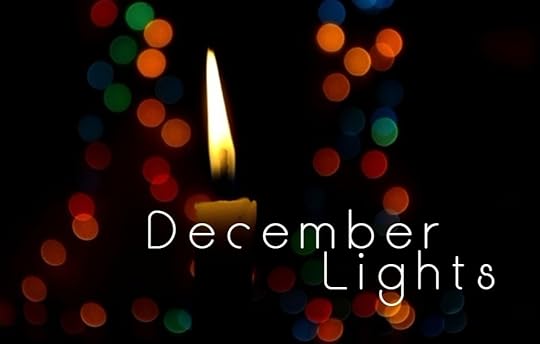
December is a time when we celebrate light piercing through the darkness. In the winter we experience more lightless hours. And December is the time when the counting of days ends and begins, like the moment a tide reverses, rolling back to sea.
Christmas celebrates Jesus’ birth, announced by the brightest star in the sky. The star oriented the wise men. It literally oriented them to the manger and symbolically orients the world to a new way of seeing—a new guiding light. We learn to recognize that we are connected to and have an impact on each other in every small gesture.
Chanukah is also a festival of lights. The light in this story is the miracle of a lamp with a tiny supply of oil lasting eight nights. Like the lamp, our daily lives leave us feeling as if we’ve exhausted our last reservoir. We learn to expand the resources deep within us and muster strength to see us through personal darkness despite improbable odds.
Animals instinctually know how to prepare for winter. Bears find caves to hibernate. Chipmunks burrow in holes underground. Even termites close off air tubes in their complex sand structures. What do we do? Besides upping the thermostat and wrapping our necks with woolen scarves, we also soak in light to store in our inner selves. We seek out the guiding star to navigate our lives, or we reach deeply within.
Light has other strange properties. Our eyes perceive a stream of light but when we reach out, we cannot touch it. We see light only when it touches other things like reflections on the moon or specks of dust in the air seen from the light of a movie projector in a dark room. We live in a time of many kinds of light. Campfires, torches, whale oil and kerosene lamps from days of old are now new kinds of light—laser, electrical, nuclear, incandescent or fluorescent, sulfur lamps or neon lights.
What takes us out of darkness physically? What illuminates spiritually? Light is the beam that reveals what it lands on. It fills the air but we see its effects, what it lands on becomes aware to our eyes or our technology sensors. Like enlightenment, like love, like peace, we sense it when it lands on us.
This is the season to notice where the light lands. This is the season to be a source of light.
November 27, 2017
Goodreads Giveaway of The Telling Image

The Telling Image
by Lois Farfel Stark
Giveaway ends December 27, 2017.
See the giveaway details
at Goodreads.
Enter Giveaway
Are you on Goodreads? I'm excited to announce that I'll be giving away 25 advance copies of The Telling Image: Shapes of Changing Times via Goodreads! To enter, click the above link.
November 8, 2017
Announcing The Telling Image
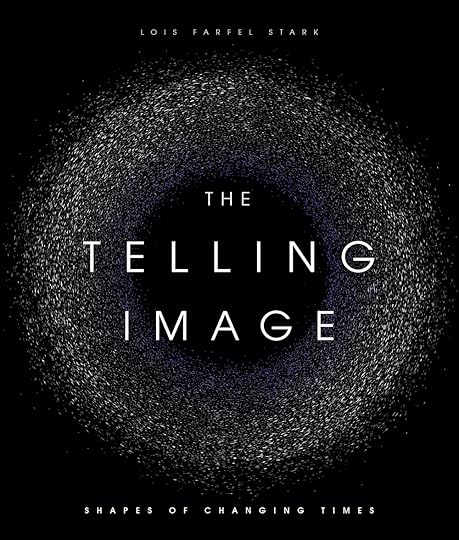
The Telling Image
Shapes of Changing Times
by Lois Farfel Stark
Now Available for Pre-Order!
I am very pleased to share with you the cover for my new book, The Telling Image: Shapes of Changing Times. This book has been ten years in the making. As many of my friends can attest, these ideas have been swirling with me since my years as a documentary filmmaker for NBC News. During my travels, I was trained to look for the telling image—a picture that gives the essence of the story. In covering countries in times of tension and transition, I had to look through other people’s eyes to learn how they saw the world. I filmed in Abu Dhabi before the United Arab Emirates were unified, in Cuba ten years after their revolution, in Northern Ireland when their religious conflict burst into urban warfare, and in Liberia covering its social split.
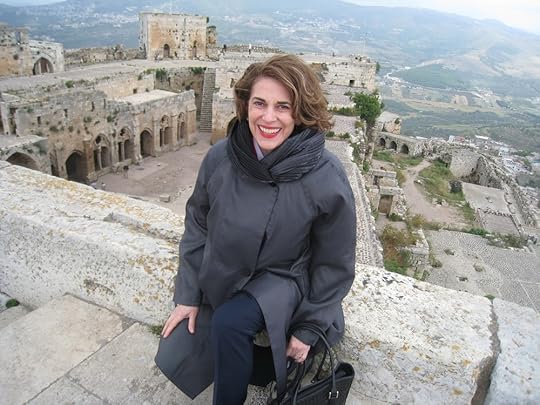
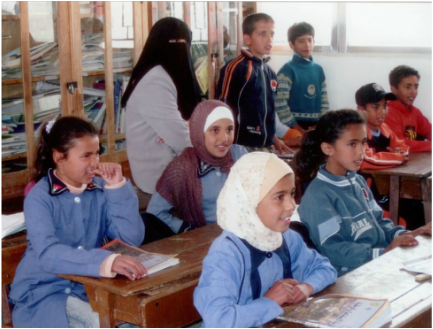
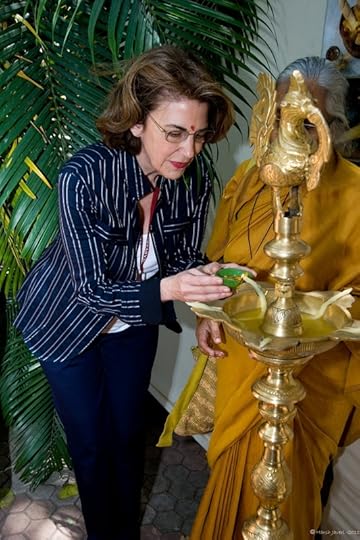
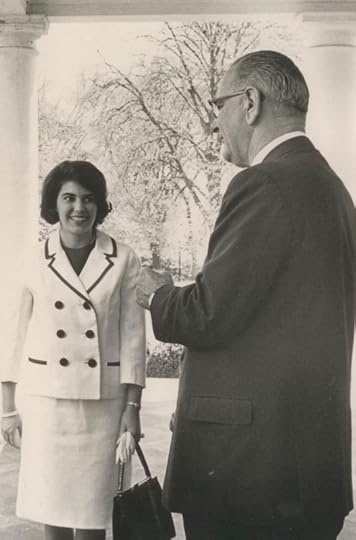
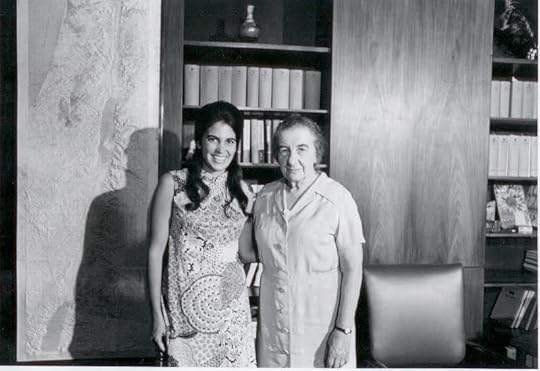
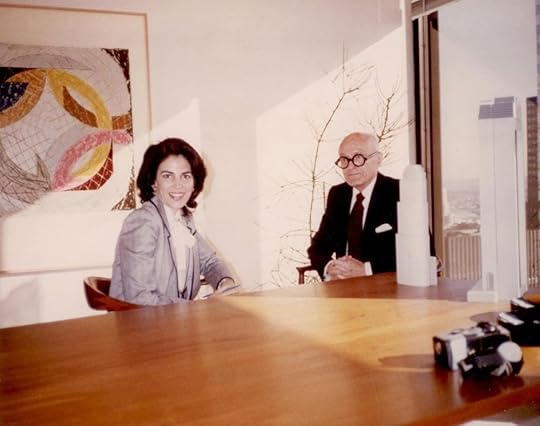
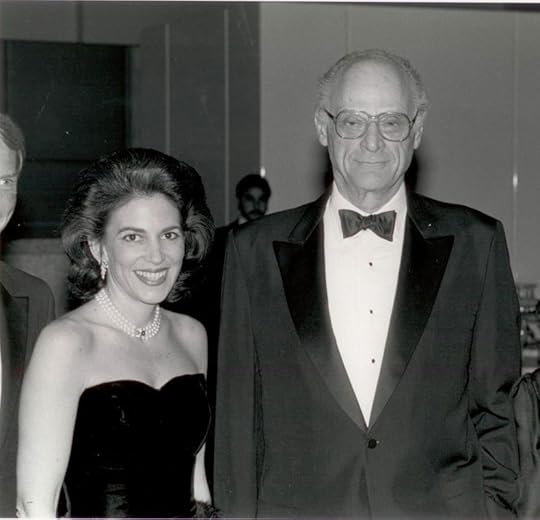
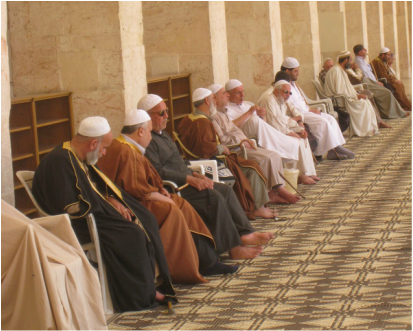
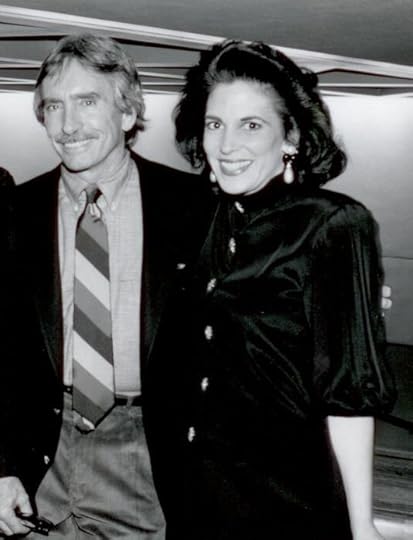
While history gives us versions of a story, a telling image has the power to tap a deeper understanding. I practiced seeing with new eyes, open to take in the unfamiliar and to discover clues to another culture’s worldview. Dropping into a foreign country and trying to understand it enough to present its various factions, historic background, and current controversy was daunting and humbling. I knew I needed to lasso the topics at play, and I knew I would never know everything. One approach I took was to step back and look at the situation with the largest lens, seeing all sides, noticing the geography that influenced the culture’s way of living, and learning the historic background. I had to find an image that could relay the issues and emotions, the culture and landscape, in a way that could convey more than words can explain.
Searching for the telling image of a story, I found one, hiding in plain sight. It was shape itself. Once I looked for shape, I saw it everywhere—in shelters, social systems, and sacred sites. From indigenous cultures to modern societies, our answers to survival, social bonding, and sacred symbols differ vastly. Yet the blueprint for each culture became clear when I looked for shape.
Now you can join in my journey. I extend my thanks to my friends, colleagues, and supporters who have been there with me along the way. Without you, this book wouldn't be possible.
If you'd like to receive more updates about my book, click here to sign up for my book newsletter and get a free excerpt of the book. Or you can pre-order your copy on Amazon.
Pre-Order a Copy
Advance Praise for The Telling Image Group sales and publicity information Press Release
October 12, 2017
Technology's New Lens
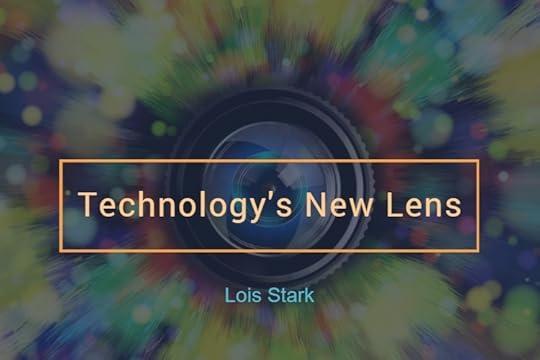
Technology's New Lens
We often don’t realize how much technology shapes our daily lives. A few decades ago, a cell phone was something out of Star Trek. But now new technologies seem less and less like science fiction and more like essential parts of our world. What we don’t realize is how much this can affect our perception.
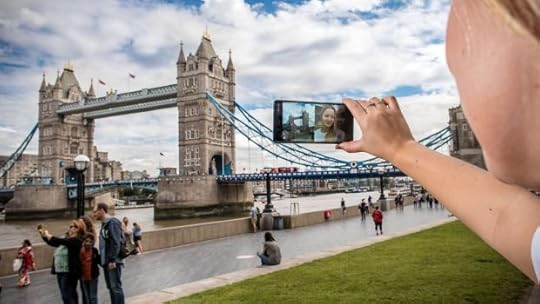
For example, the new Nokia 8 allows you to take a picture of what is in front of you as it also records you and what is behind you. This is called a “Bothie” now adding to selfies, allowing people to take pictures forward and backwards simultaneously. The concept is simple—two lenses. But it blows open our habit of perception. Will we start to perceive like the proverbial teacher with eyes in the back of her head?
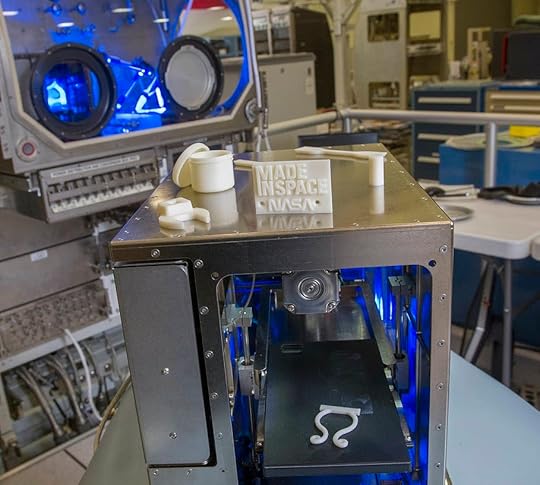
3-D printing is another way of seeing in new ways. It incorporates a full-sphere visual of the object being replicated. The blueprint of a hand tool can be sent to the International Space Station, where a 3-D printer creates the tool for astronauts to use. This cuts down on payloads launched and allows for devices to be created as they are needed. But it wouldn’t be possible without the technology that allows us to see in multiple dimensions. Inside the space station, astronauts float and summersault to move about. They tether themselves to a spot with a foot latch to anchor themselves to a place on the cylinder-shaped interior walls. Without gravity, our way of seeing the world changes. When the first crew left earth they were astounded by the sight of our Earth from outer space, it allowed them to see our world in new ways.
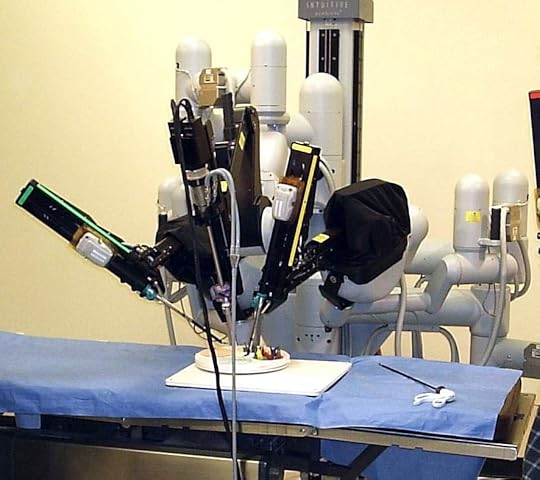
Even healthcare is rearranging. Robotic assists during medical surgery become a 360-degree eye that can image the space around and under the bones, nerves, tissues, muscles, and organs being operated on.
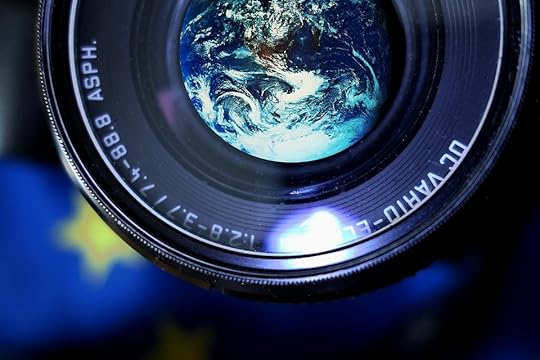
These new ways of recording, seeing, moving, working upend our basic assumptions. We can feel unmoored, as dizzyingly adrift as an astronaut floating in space. The ability to see all around us at once will be an acquired perception, much like a blind person suddenly given sight needs to learn to distinguish the depth of fields, the outline of forms. Add virtual reality to these multiple lenses, and the job of making sense out of what is real or imagined, what is forward or back, or what is in around the corner, requires a major adjustment in our senses and how we make sense of the world. The question is: What will you do with this new sight?
August 18, 2017
The Magic of Coincidence: On the Solar Eclipse
The Magic of Coincidence: On the Solar Eclipse

Image Credit: Rick Fienberg, TravelQuest International and Wilderness Travel/NASA.
Predicting the future sounds like the power of a super hero. But in early Aztec and Babylonian cultures, priests held the knowledge to do just that. Take for example, the total solar eclipse. Priests received the wonder of their flock for being able to chart the skies—something we consider now a natural science. The trick of magic is knowing where the secret actually is—up a sleeve, in a hat, coming out of a scarf.
In the case of the total solar eclipse, the magic of coincidence mounts. It is not only that the moon enters the path of the sun. The relative size and position of the sun and the moon also matter. The moon is four hundred times smaller than the sun, but it floats four hundred times nearer to Earth. From a certain spot on our globe, the smaller moon can then entirely cover the larger sun to the viewer on Earth.
This is a coincidence in our notion of time and space. But in a few hundred million years, total solar eclipses will be over forever. The moon has been moving away from us at a rate of one and a half inches per year, since its birth four billion years ago. What we see in the sky the as the total eclipse will be but a memory, a chance encounter that can either change our perception of the world or simply pass us by.
How easy it must have been for early cultures to believe that the sun revolves around the Earth. Like early humans, we too experience our day as starting with sunrise and ending at sunset. But we know now the opposite is true, that the Earth revolves around the sun.
The sun rises in the morning and the moon appears at night, two fixed points of reality—daylight and moonlight. Sure as can be, the world must be divided by twos. But this perspective changes when you’re in space. An astronaut sees a whole new reality—a system with moving parts. From a space ship there are 16 sunrises in 24 hours.
We are a part of a solar system that is a part of the Milky Way. How grand and beautiful it feels to see the whole splay of stars in the sky from a rural area on a cloudless night. You know where you are. But hold on. We are part of a galaxy that is one of two trillion galaxies. I repeat, two trillion, so far and still counting. Put your mind around it. You cannot. It’s more than we can fully comprehend. Yet it does quicken our appreciation that whatever answers we have are partial answers to ever larger possibilities.
As you think about the solar eclipse, try to expand your mind. You can apply that same imaginative focus on the micro world as well. As the NASA artist Sergio Toporek reminds us:
Consider that you can see less than 1% of the electromagnetic spectrum and hear less than 1% of the acoustic spectrum. As you read this, you are traveling at 220km/sec across the galaxy. 90% of the cells in your body carry their own microbial DNA and are not ‘you’. The atoms in your body are 99.99999999999% empty space and none of them are the ones you were born with, but they all originated in the belly of a star. Human beings have 46 chromosomes, 2 less than the common potato.
Let it be a relief. Some other force is driving the train. Sit back and appreciate the view.
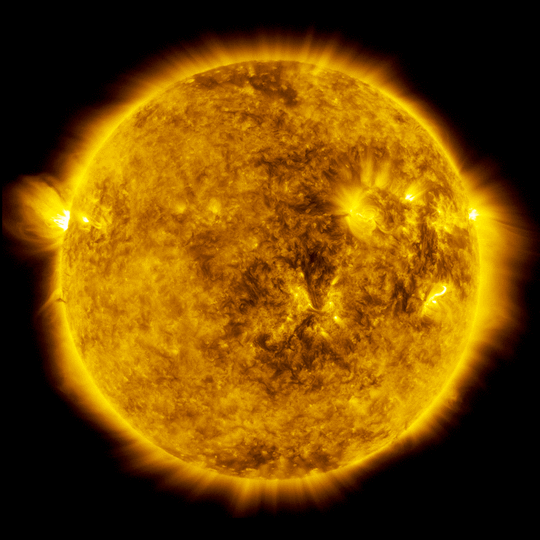
On May 25, 2017, NASA’s Solar Dynamics Observatory, or SDO, experienced a partial solar eclipse in space when it observed the moon passing in front of the sun. The lunar transit lasted about an hour, between 2:24 and 3:17 p.m. EDT, with the moon covering about 89 percent of the sun at the peak of its journey across the face of the sun. Credits: NASA’s Goddard Space Flight Center/SDO/Joy Ng, producer
August 2, 2017
Square, Triangle, Circle

You’ve heard about trying to put square pegs into round holes. The message is they don’t fit. It’s one of the first games young children are taught—how to distinguish a circle from a square from a triangle. Once we learn this way of seeing, we tend to categorize. We determine the shape of things and figure out what fits where. As useful as this lesson is, it sticks so deeply that we forget there’s more than one way to see things, more than one approach to a problem, more than one way to write an equation.
In today’s world, visual information outranks text. Animations can show us dimensional fields. With 3-D printing machines, children can easily imagine multiple dimensions. So let’s teach them how what seems impossible is possible with a new way of thinking, and that there can be multiple correct answers to a question.
The given problem is to shape a single cylinder so that it can fit through a circle, a square and a triangle, while touching all of the opening. The answer is shown in this video.
These three primal shapes—circle, square, and triangle—are essential symbols in ancient cultures. Zoroaster spoke of them as three symbols of man. The founder of Aikido spoke of the triangle as body, the circle as mind and the square as solidity. The three symbols painted in the Zen monastery at Kennin-ji is referred to as ‘the universe’. Artistically, philosophically, and physically, in the cylinder with the three forms in one entity, there is the idea that these three forms lead to oneness.

Sengai Gibon (1750-1838)
Once you enlarge your imagination, what seemed fixed opposites or impossibilities switch to multiple options.
June 6, 2017
Upside Down
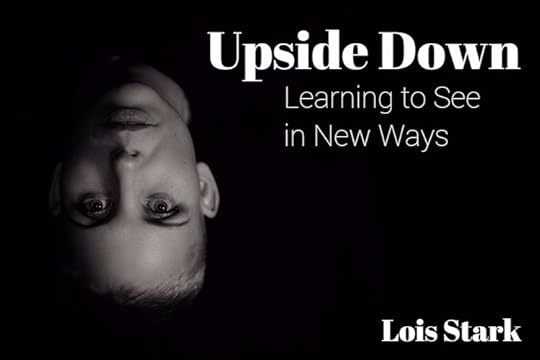
Have you ever looked at photograph of a human face upside down? It takes awhile for our eyes to process through our brain, to even be sure it is a face, much less a face we know. Our automatic recognition of the world is keyed to frame and name the familiar.
Today’s world can seem upside down. Accelerated change has made it almost impossible to find a fixed point that is not in flux. The shape of cities will alter as we go from cars we drive to cars that drive themselves. Drones multiply our capacities to see with 360 degree vision, both from above the landscape and within buildings .Think of astronauts floating in the space station, with no up nor down, somersaulting rather than walking. We relearn how to orient, how to pattern, while it’s all in motion.
Henry Ford said if he had asked people what they want, they would have said faster horses. If Steve Jobs had asked us, we could not have imagined icons that lead us to draw on a computer, icons that let us shop on a cell phone. So let’s be clear. Since we are in motion, since the new can come to us from any angle, we must start to see like a floating astronaut, alert in all directions.
Familiar patterns are coming to us upside down. Dylan the musician gave a concert in England in 1965 where the first half was his popular folksong style. The second half burst open with an electric band, full of unfamiliar sounds, that are now classics, such as Tell Me How Does It Feel from the song Like a Rolling Stone. Food is in fusion, from IndoChine to Tex Mex. Family systems now come in multiple combinations, as well as gender. It feels like a blend, a potpourri, but eventually fresh forms become their own new selves, like jazz, where African beats become American blues.
More voices are being heard today by more people than ever before. By voices I mean musicians, writers from all cultures, tech creations from drones to genomics. It is the age of participation, of networking, of the inane and the incredible in the same mix. It can disorient, seem raw, but also freshly intriguing, up to each of us to discern the pattern in unfamiliar terms, like recognizing a face upside down.
April 11, 2017
To understand the genius of Elon Musk, Thomas Edison, and Mark Zuckerberg, just look at their desks
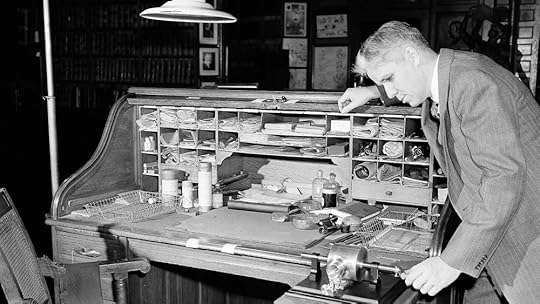
Desks have long been the home of the mind: an intimate space where you figure out what you think. Desk spaces have changed through the years to accommodate different styles and types of work, and the recent trend toward co-working also represents a change in the nature of the workplace. You can now rent workspaces around the world with funky furniture, pool tables, rock-climbing walls, and free wine. In London, people even rent chairs at their dining-room table by the hour—an attractive alternative to those living in small apartments who are tired of working in coffeehouses.
Lois' Lens
- Lois Farfel Stark's profile
- 21 followers



